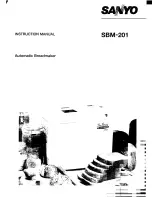
SLAYER ESPRESSO V3 USER MANUAL V5.1 | AUGUST, 2022
18
Espresso Basics
Coffee “beans” are the seeds from cherry-like fruits that grow on shrubs
in equatorial regions. After picking and processing, the beans are roasted,
ground, and dissolved in water to yield a coffee beverage.
Brewing espresso is a unique method of coffee extraction in which water is
added to ground coffee under intense pressure. As a result, the beverage,
when compared to filter coffee (e.g. pour-over, immersion), contains a
higher concentration of dissolved coffee, feels heavier in the mouth, and
asserts stronger flavor.
The espresso machine is the preferred equipment for preparing espresso.
Therein, coffee is secured, water is heated, pressure is applied, filtration
occurs, and the beverage is dispensed. The entire process takes less than
one (1) minute.
Many variables affect espresso extraction and therefore require the
attention of the barista. Consider the following generalizations and
guidelines when preparing espresso.
COFFEE ORIGIN
Coffee plants are cultivated around the world in equatorial regions that
have varying climates and growing conditions. Every location — country,
locale, farm, and lot — produces coffee with distinct characteristics that
contribute to discernible differences in beverage flavor. Slayer Espresso is
well-suited for preparing coffee from any single origin, as well as blends of
coffees from varying origins.
PL ANT VARIETY
Like other fruits (e.g. apples, oranges), coffee beans may come from
one of many varieties of the same plant. Common varieties include
Typica, Bourbon, Heirloom, and Caturra, among others. Every variety
produces coffee with distinct characteristics that contribute to discernible
differences in beverage flavor.
PROCESSING METHOD
There are many unique processes by which coffee seeds may be separated
from the fruit containing them. Every process produces coffee with distinct
characteristics that contribute to discernible differences in beverage flavor.
Note these examples:
•
“Washed” process:
increased acidity, enhanced flavor clarity, clean
body
•
“Natural” process:
fruit-forward flavor, full body
•
“Pulped natural”, “semi-washed”, and “honey” processes:
borrowed
characteristics from washed and natural processes
GREEN COFFEE FRESHNESS
After it has been picked and processed, green (i.e. un-roasted) coffee has
a considerable shelf life. However, the potential quality of coffee beverages
deteriorates with the age of the green coffee. For best results, buy roasted
coffee from a trustworthy supplier that guarantees the freshness of its
green coffee.
ROAST PROFILE
Roasting makes the dense, green coffee bean porous and soluble and is
the first step in preparing coffee for extraction. Coffee may be roasted
to varying degrees by a variety of technologies, each producing coffee
with distinct characteristics that contribute to discernible differences in
beverage flavor.
Generally, the flavor of espresso prepared from light-roasted coffee
will more closely resemble the characteristics of its origin, variety, and
processing method (e.g. “bright”, “fruity”, etc.). Conversely, the flavor of
espresso prepared from dark-roasted coffee will more closely resemble
the characteristics of caramel, dark chocolate and nutty flavors. In some
instances the dark roasting process will take a coffee too far into the roast
yielding over developed flavors. (e.g. “smoky”).
ROASTED COFFEE FRESHNESS
After roasting, coffee beans are increasingly vulnerable to deterioration.
Preserve freshness by storing in a sealed container in a cool, dark area.
Ideally, use a container that allows the outward flow of gas, which coffee
releases as it ages, but prevents the inward flow of oxygen. Espresso is
generally most flavorful when prepared with coffee that has “rested” for
at least two (2) days after roasting but has not exceeded three (3) weeks.
These guidelines are especially important for dark-roasted coffee, which
deteriorates faster than light-roasted coffee.
GROUND PARTICLE SIZE
Preparing espresso requires finely-ground coffee and a professional
grinder. When setting up your grinder, target a setting that achieves the
recommended beverage yield with the recommended dose weight in
the recommended brew time. Continue reading for recommendations
















































